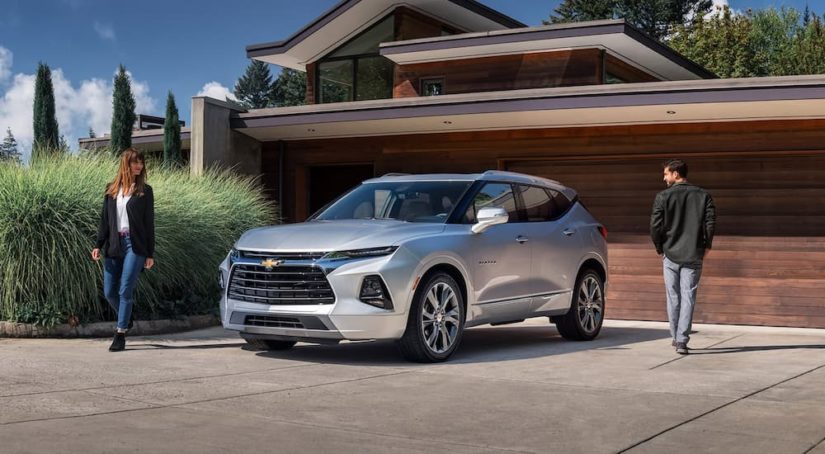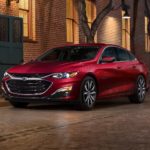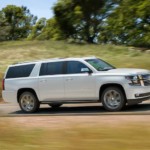You can’t go wrong choosing a Chevy for your next vehicle since they are built with drivers in mind and are known for their longevity. They’re affordable, they’re reliable, and they even look as good as they perform. However, there’s a lot more you need to consider to make the right decision with a vehicle other than just the brand. Chevy’s lineup may range in size, shape, style, power, and capability, all to ensure every driver can find the perfect model for their needs, but there’s a method to the vehicle selection process, which of course, begins after you search for a “Chevy dealer near me” to find a dealership that shares the same values as you to help you on your car-buying journey.
Your budget, vehicle body styles, what’s under the hood, and how it relates to your driving needs are all things that need to be considered when searching for your next vehicle. With Chevy’s many options to choose from, it’s good to have a guide to help narrow down the models that are more suitable for you, so there is less of a selection to choose from. Before you overwhelm yourself by heading out to the dealer’s lot or searching the dealership’s inventory online, here are five steps that you can use as a guide to help you find your next Chevy model.
#1 – Set Your Budget: New vs Used Models
The Chevy brand is known for its vehicles offering high-class performances, style, and technology at affordable prices. By choosing to look at Chevy models, you are already making a good decision to keep yourself within a budget. Prices will vary depending on your preferences regarding style, size, performance, and capabilities, but even if you prefer a fully-loaded, full-size pickup capable of any road or task, there’s a way to fit it into your budget, no matter what your limitations are.
Many people today don’t drive their vehicles into the ground like they used to. Some of that is due to lease options that give people the ability to finance a vehicle for a shorter period of time at a lower monthly payment than buying the same model would cost. The used vehicle market has benefited from leases since many people choose to trade in their lease after their three or four-year contract so they can continue to drive a newer model with the latest features and technology. This means if new is out of your budget, buying a used car doesn’t mean you are buying an outdated model with limited days left for the road. It also means that if you prefer your Chevy to be fully loaded but can’t afford all of the amenities with a new vehicle price tag, you have the option to choose a used model that could be barely broken in, with the maximum level of style, comfort, and convenience, all at a price you can afford.
Drivers have depended on Chevy models for over 100 years. With that kind of reputation, even when you buy a used Chevy, you can be confident that it’s going to last you many miles. However, the days of buying used without benefits are over. For additional confidence on the road with a used Chevy, look for a Certified Pre-Owned (CPO) model because you’ll not only be buying a used model that has to meet specific requirements, but it has to pass a rigorous inspection with repairs and comes with limited warranties and roadside assistance. In the end, no matter if you choose a new, used, or CPO Chevy, you’re buying a vehicle built to last.
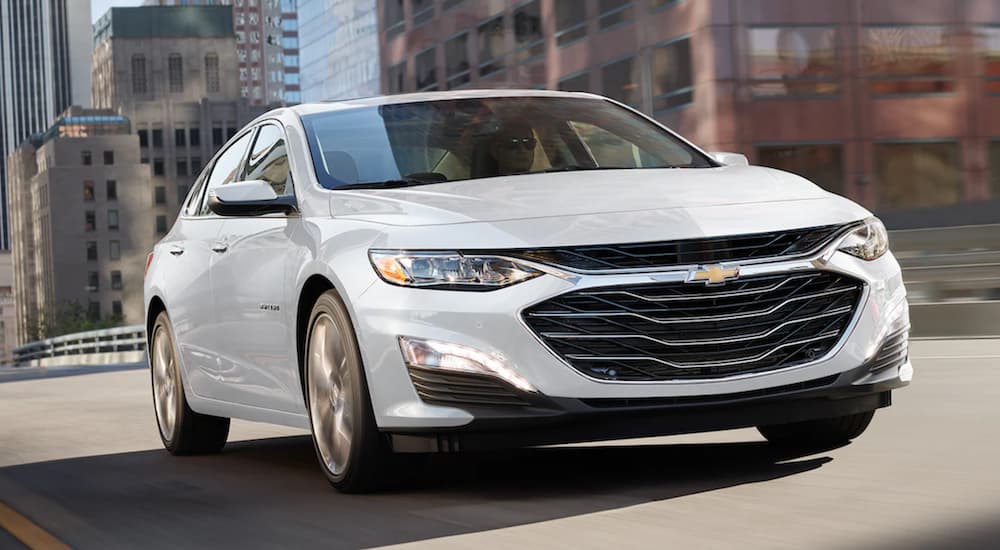
#2 – Know Your Options: Vehicle Types
Now that you know the purchasing options that are available to you, it’s a good time to educate yourself or refresh your knowledge on the types of vehicles that are on the market. Although many manufacturers have eliminated sedans from their lineups, Chevy is not one of them. You’ll have a choice between cars, trucks, SUVs, and performance vehicles.
The type of vehicle that will be suitable for you should be based on what you need from your vehicle. For the best fuel economy and comfort, there is the good old Chevy Malibu midsize sedan. If you’re a solo driver looking for the best mileage, the Chevy Spark is a fuel-efficient subcompact hatchback that comes with an affordable price tag, enough room for you and a couple of passengers, as well as some cargo space behind the rear seats. Or maybe for a car, you’d prefer the more athletic Chevy Camaro or Chevy Corvette, both with enough power to take to the track on Friday nights but also enough class to cruise through the city streets.
When you expect your vehicle to work as hard as you and be able to conquer any task, a pickup truck may be the best option. Today, trucks are more versatile than ever and are no longer just for work. Not only are Chevy’s midsize Colorado and full-size Silverado models capable of towing, hauling, and taking you on adventures off-road, but they are now available with spacious cabins and amenities to maximize comfort and convenience.
If you don’t need impressive towing capabilities or a cargo bed that comes with a truck, SUVs are the go-to vehicles for versatility. Chevy carries SUVs in all shapes and sizes, from the subcompact Trailblazer to the compact Equinox, midsize Blazer, and full-size Suburban. An SUV combines the passenger space, fuel efficiency, and interior cargo storage of a car with the capabilities of a truck, allowing it to keep up with your busy life commuting to work, picking up groceries, home improvement tasks, and even vacationing. Depending on your driving needs, whether it be fuel efficiency, passenger space, cargo storage, towing, or off-road capabilities, knowing how you want your vehicle to work for you will help you choose which Chevy SUV is for you.
#3 – Discover What Drives Your Vehicle: Drivetrains Explained
The drivetrain consists of all of the components used to transfer the energy from the engine to the wheels of the vehicle to make it move. There are four different types of drivetrains: front-wheel drive, rear-wheel drive, all-wheel drive, and four-wheel drive. Depending on the type of driving experience you want or need, you’ll need to understand how each of the drivetrain types works to determine which you will benefit from most.
Front-wheel drive and all-wheel drive are the two most common drivetrains you will find on your search for a Chevy model. Front-wheel drive vehicles have engine power distributed to the front tires. They usually get great gas mileage, are easy to drive, and are affordable, hence why they are so common. All-wheel drive vehicles have their engine’s energy distributed to all four wheels automatically, making it very popular for those in need of a vehicle with all-weather traction and overall great performance in any road conditions.
Rear-wheel drive is primarily available with trucks and performance vehicles since it provides better acceleration. However, it also makes the vehicle harder to drive in inclement weather. While trucks and large SUVs are primarily rear-wheel-drive vehicles, they are usually available with four-wheel drive, which powers all four wheels simultaneously like all-wheel drive. The difference between the two is that four-wheel drive does not distribute the power to all four wheels automatically when needed or all the time; it needs to be activated manually. Four-wheel drive is the most capable drivetrain when it comes to rough road conditions and difficult terrain since when four-wheel drive is engaged, the energy will be distributed to all four wheels all the time until you turn it off. However, depending on your driving needs, one of the other drivetrains may drive you to the performance you are looking for with your next Chevy.
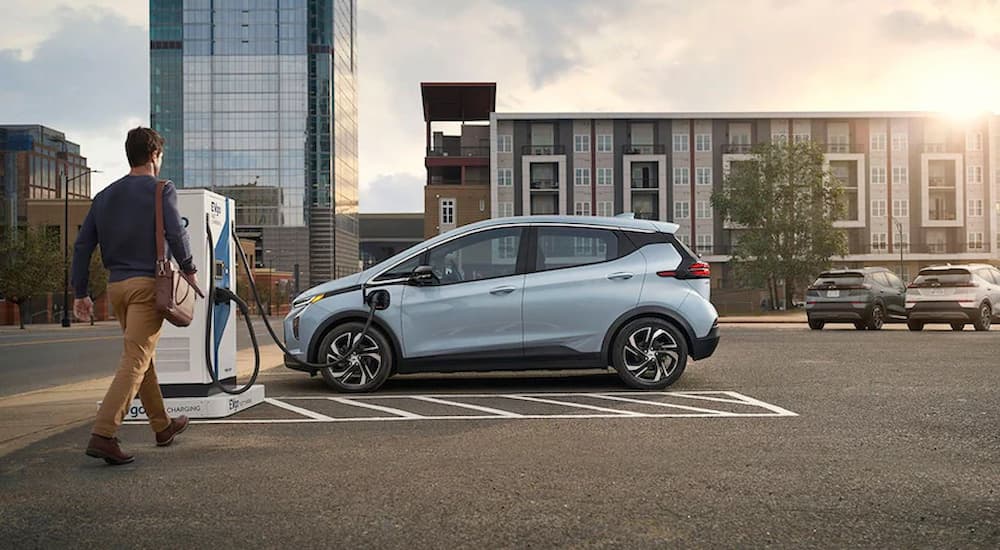
#4 – Your Power of Choice: Use Engine Specifications to Guide You
The drivetrain works hand-in-hand with the engine of a vehicle to provide you with the ultimate performance. Since Chevy prides itself on giving drivers exactly what they want, the brand gives you the power to choose the performance you desire with a variety of engine options available to you. From size to fuel type, there’s plenty to choose from. Some models like the Chevy Silverado and the Camaro have many engines you can choose between, but how do you know which option is best for you? The answer is simple: you need to look at the engine specifications.
Choosing whether you want a gasoline or diesel-powered Chevy, or even an electric model like the Chevy Bolt EV, is the easy part. Diesel models typically get better fuel economy than gasoline engines, but all-electric vehicles are the most efficient around. Knowing and understanding how the size of a motor and how its horsepower and torque work in relation to performance and capabilities is where it can get tricky.
Of course, the smaller the engine size, the less fuel it will need, but you need to know that you will be sacrificing power. Engine size is measured by the displacement, or total volume, of the number of cylinders it has and can be seen expressed in liters (L). Generally, the more liters the engine has, the more power and capability it will have to accelerate faster and tow heavier loads, likely resulting in lesser fuel efficiency. However, turbocharged and supercharged models are an exception to this rule, providing far more power than their size would indicate.
The power of an engine can be measured in horsepower and torque. These numbers are another indication of how your vehicle of interest will perform for you and what it is capable of. Torque (lb-ft) is the amount of pulling power available, while horsepower (hp) measures torque at high speeds. Basically, horsepower makes a vehicle fast, and torque gets the vehicle up to speed quickly and gives it off-road and towing capabilities. You can use horsepower and torque measurements to compare motors of the same model or for different models completely to get a better understanding of how the vehicles will perform. For example, if you want to get up to speed quickly from a stop sign, then you’ll need high torque, but if you are looking for a fast car that can maintain speed, you’ll want high horsepower.
#5 – Time to Customize Your Vehicle
Choosing the size and type of vehicle with a powertrain capable of providing you with the performance you desire is only the beginning of your search for your next Chevy. For an even more customizable experience, Chevy makes sure that each of its models has plenty of ways to personalize your vehicle around your preferences in style, comfort, and convenience. From exterior paint colors to trim levels, special editions, and interior features and amenities, your options are endless. And with Chevy’s history of leading the industry with innovative features and styles, you are bound to be able to build a one-of-a-kind Chevy specifically for yourself. If ordering brand-new doesn’t work into the budget you set for yourself, don’t worry; there are plenty of used Chevy’s out there to help you check all the boxes on your vehicle requirement list.
